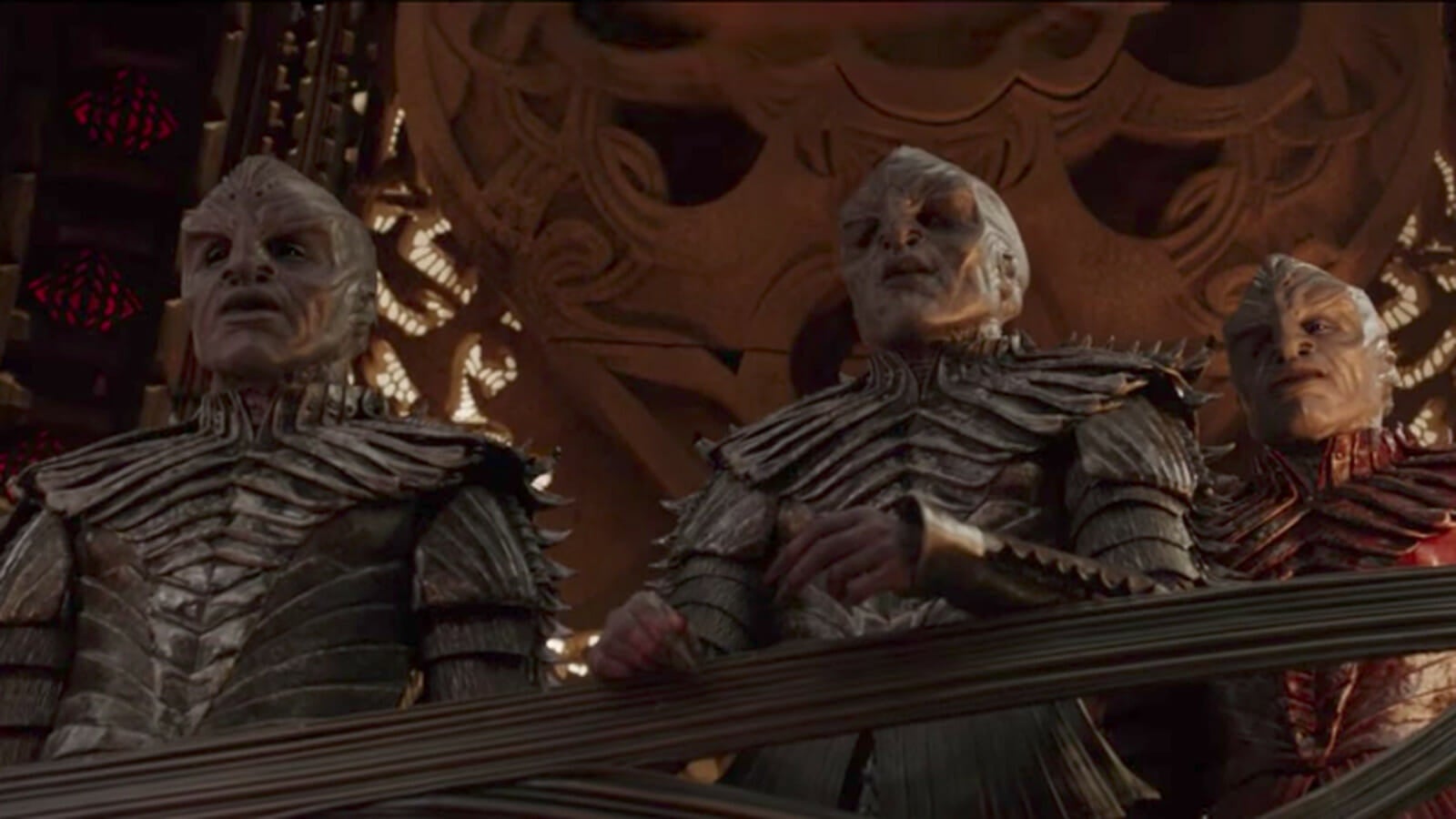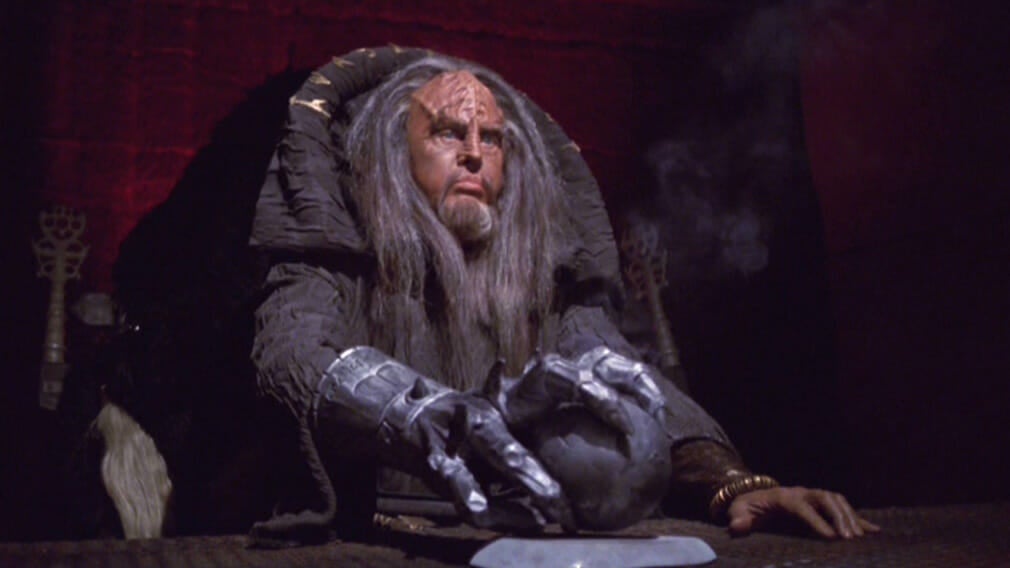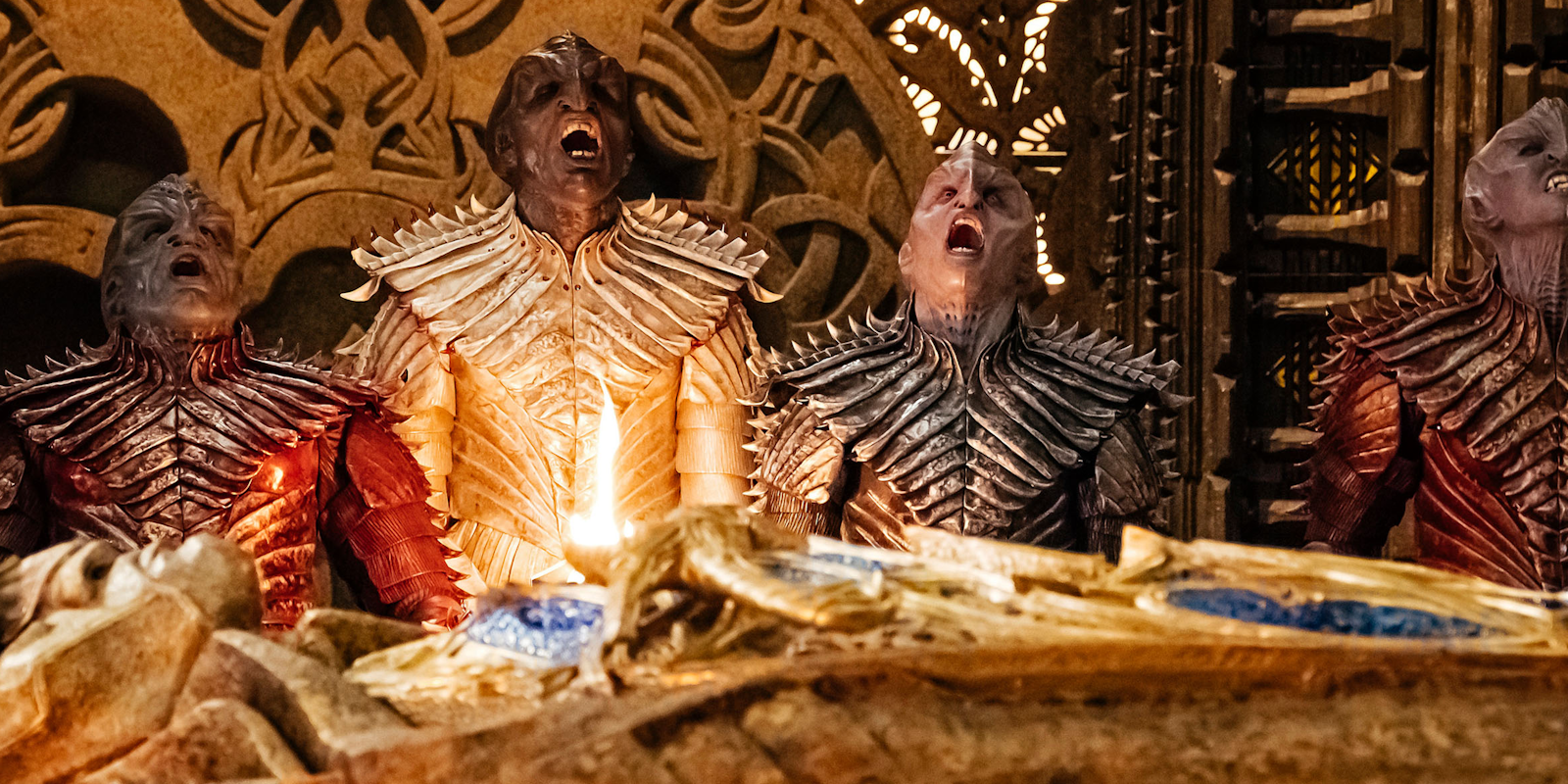Klingons are a constant presence in the Star Trek franchise, presenting a warlike contrast to the diplomatic Federation. Deep Space Nine and The Next Generation fleshed out Klingon culture with episodes about their religious rituals and political structure, but Discovery promises to go further. It includes several Klingon characters in central roles—and they’re actually going to speak Klingon.
Following on from our Klingon episode guide, we’ve put together some essential information about Klingon culture. Despite what some episodes suggest, these aliens are more complex than cartoonish viking berserkers with laser guns. They’ve got a solid (albeit very flawed) political backstory as empire-builders and plenty of unique traditions. Here’s what you need to know!
1) There’s an in-universe explanation for the Klingons’ changing appearance
If you’ve seen the Original Series, you’ve probably wondered why the Klingons look so… human. The actors wear some makeup (which would now be described as brownface), but they’re nowhere near as “alien” as the blue-skinned Andorians or even Spock with his pointy Vulcan ears.

After Star Trek: The Motion Picture in 1979, things changed. The Klingons gained a more alien appearance, adding forehead ridges, wild hair, and prosthetic teeth. They went through some updates for The Next Generation, but this design basically remained the same until Star Trek: Discovery, where they’ve received a radical makeover.
These changes were obviously due to budget constraints and evolving expectations for visual effects on TV. But Star Trek being what it is, the franchise has provided a couple of in-universe explanations. In the prequel series Star Trek: Enterprise, there’s a storyline where some Klingons undergo genetic fusion with human DNA, creating an epidemic of human-appearing Klingons. This is the official canon explanation, but some fans may prefer a more poetically satisfying answer. During a time travel episode in Deep Space Nine, Worf comments on a group of strangely human-looking Klingons by simply saying, “We do not discuss it with outsiders.“
2) The Klingons have an aristocratic empire
Klingons are often characterized in direct opposition to the Federation. In the Original Series, that meant Klingon leaders were cruel and treacherous compared to Captain Kirk’s compassion and heroism, while in TNG, they were aggressive brawlers opposite Picard’s calm diplomacy. The same goes for political worldbuilding, creating a culture clash between the Klingon hierarchy and the Federation’s socially progressive bureaucracy.
The Klingons are fiercely attached to their aristocratic bloodlines, with most leaders coming from the head of a noble “house.” This forms the basis of their more Shakespearean conflicts, including a TNG episode where Klingon lords are still assassinating each other for control of an interplanetary empire. It’s a feudal arrangement where lower-class Klingons struggle to achieve political and military recognition, and family honor is a central part of a person’s identity. This hierarchy is also pretty sexist, although Discovery may decide to just ignore that particular detail.

The Great Houses will have a more prominent role in Discovery, which features a crew of Klingons including a leader named T’Kuvma, who wants to unite the houses. In the same way that humans have different national identities on Earth, Discovery will explore the cultural differences between the Klingon houses.
3) They’re not all warriors
You can’t build a society if everyone’s a soldier, but most of the Klingons we meet are warriors. Even civilian characters tend to interpret their careers with a military attitude, such as Klingon lawyers who treat courtroom debates like a duel. Their warrior culture is so strong that in some cases, Klingons are penalized for choosing less “honorable” careers. So, how does that actually work?
To be honest, it’s not entirely clear, and that’s partly because the show views Klingon culture from an outside perspective. In TNG, we see hints that Klingon scientists are undervalued by the front-line soldiers, while the Enterprise episode “Judgment”—the one covering the Klingon-human genetic virus—goes a little further. It suggests that Klingons have become so entrenched in their warrior traditions, they’ve begun to stagnate in terms of technological development—which could explain why humans were able to catch up with them in the space race.

4) They went into space before the humans
In the distant past of Star Trek’s backstory, the Vulcans visited Earth and mentored humankind as they developed faster-than-light travel. The two cultures built the Federation alongside the Andorians and the Tellarites, but elsewhere, the Klingon Empire was already going strong.
The timeline is a little inexact, but the Klingons seemingly had warp drive technology in the 21st century. There’s also a strong implication they had functional spaceships as early as the 9th century AD, because a King Arthur-like figure named Kahless was buried on a planet outside the Klingon homeworld. Their technology was far ahead of Earth’s capabilities, but by the time of the Original Series in the 23rd century, the Klingons and Federation are portrayed as equal forces.
5) They meet humans for the first time in Star Trek: Enterprise
We didn’t include this episode in our Klingon episode guide because, to put it bluntly, it sucks. But if you’re a completist, Enterprise‘s pilot episode depicts the Klingons’ earliest chronological appearance. When a Klingon crash-lands in an American cornfield in 2151, Captain Archer and his crew take the Enterprise on its maiden voyage, returning him to the Empire.
This turned out to be a tactical error because the Federation barely knew anything about Klingon politics at this point. The Klingons objected to the way their citizen was returned, leading to decades of conflict.
6) Klingon is now a real language
Alongside Tolkein’s Elvish and the Na’vi language of Avatar, Klingon is one of the most fully developed fictional languages. Created by the linguist Marc Okrand, it appears throughout the later series of the Star Trek franchise, inspiring some fans to learn it in real life. These days there’s a Klingon Language Institute and several books translated into full Klingon. If you want to learn some yourself, Duolingo is launching a Klingon language app in time for Discovery, whose Klingon characters will actually speak the language with English subtitles throughout the show.
7) They’re seriously into mythology
While Star Trek tends to avoid religious topics for its human characters, several alien races have fully developed faiths. For the Klingons, that translates to a combination of ancient rituals and a passionate interest in mythic storytelling. This where their viking inspiration comes in, because the Klingon afterlife bears a strong resemblance to Valhalla, and they’re seriously into quasi-historical epic myths. The most famous of these is the tale of Kahless.
As the legendary founder of the Klingon Empire, Kahless is a combination of historical figure and fairytale messiah. Thanks to a Jurassic Park-style cloning episode in TNG, we know he was probably a real person, but beyond that his role is shrouded in centuries of reverence within Klingon culture. His adventures form the origins of Klingon ideals and honor, including an iconic romance where he and his lover killed a hall full of enemies until they were ankle-deep in blood. Perhaps unsurprisingly, the Klingons are also very into opera.

